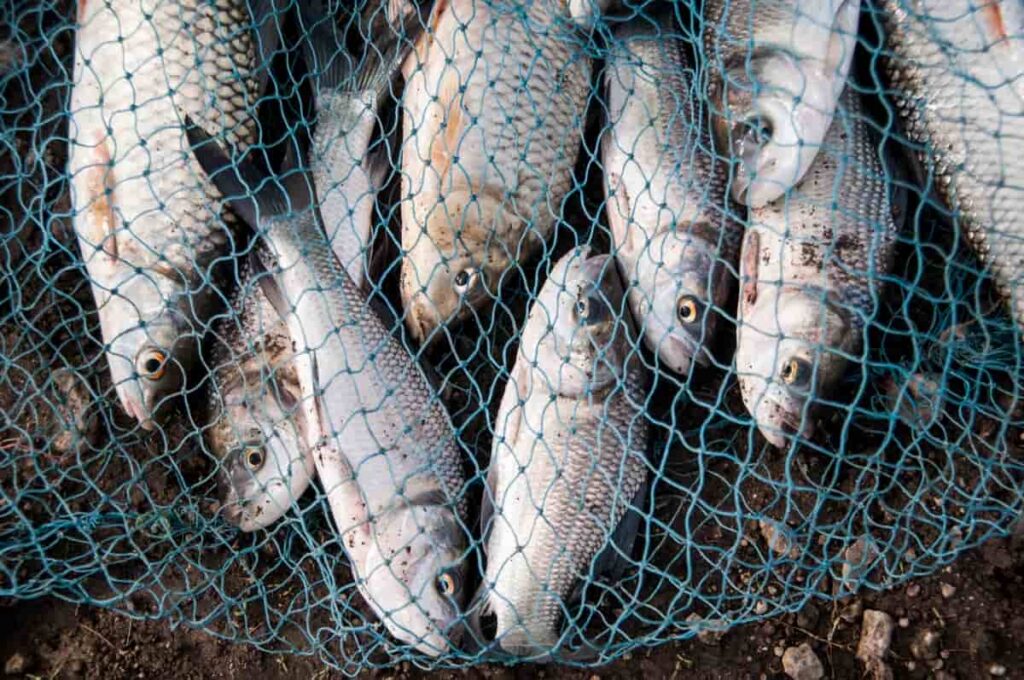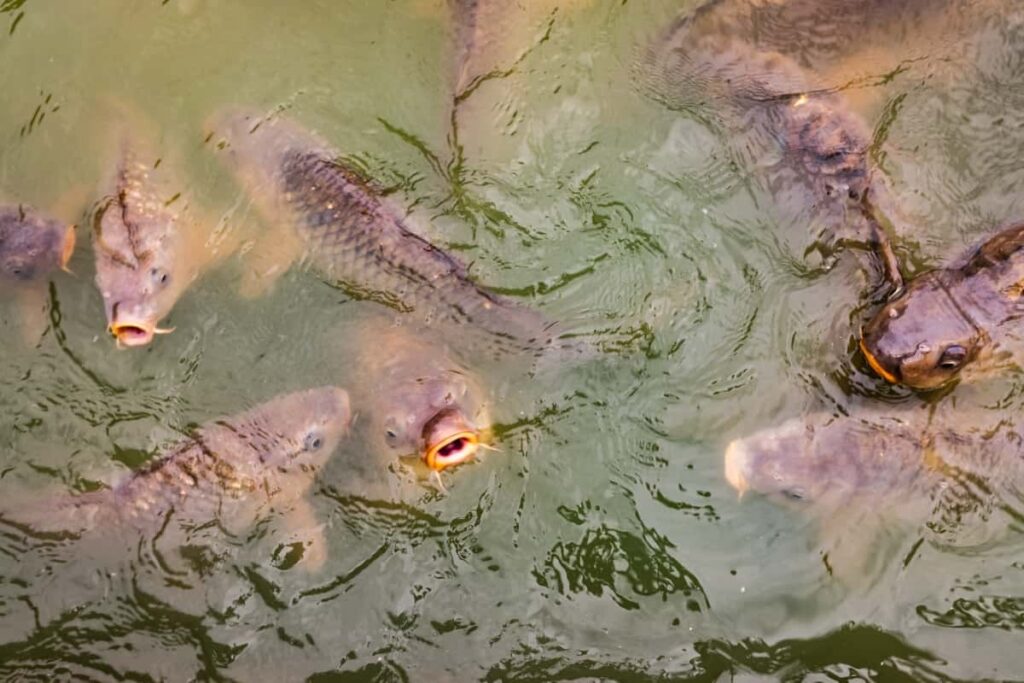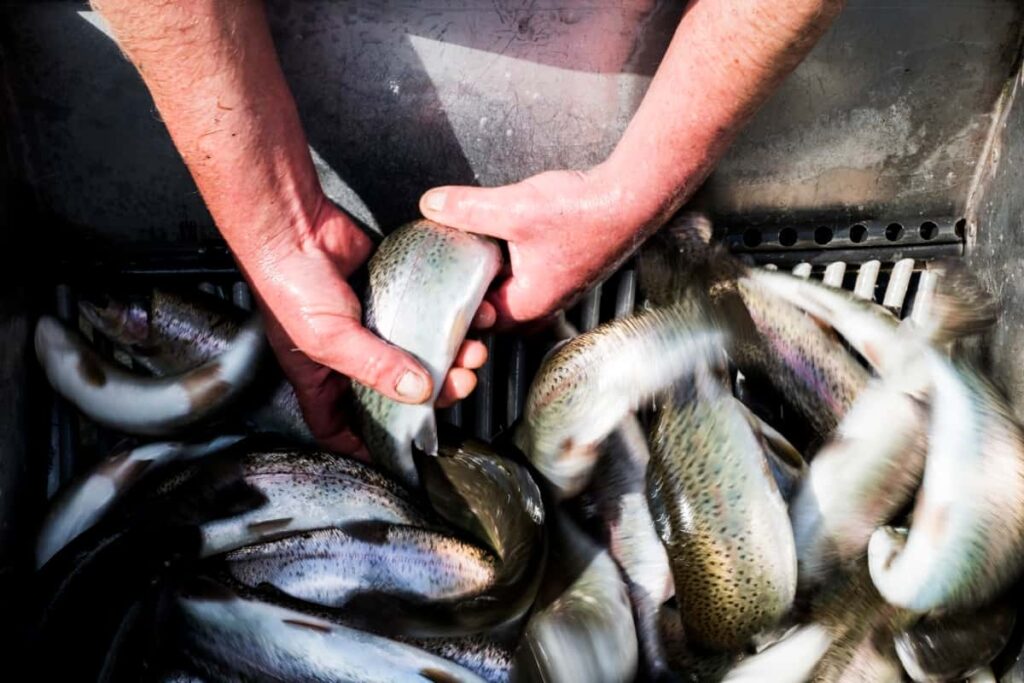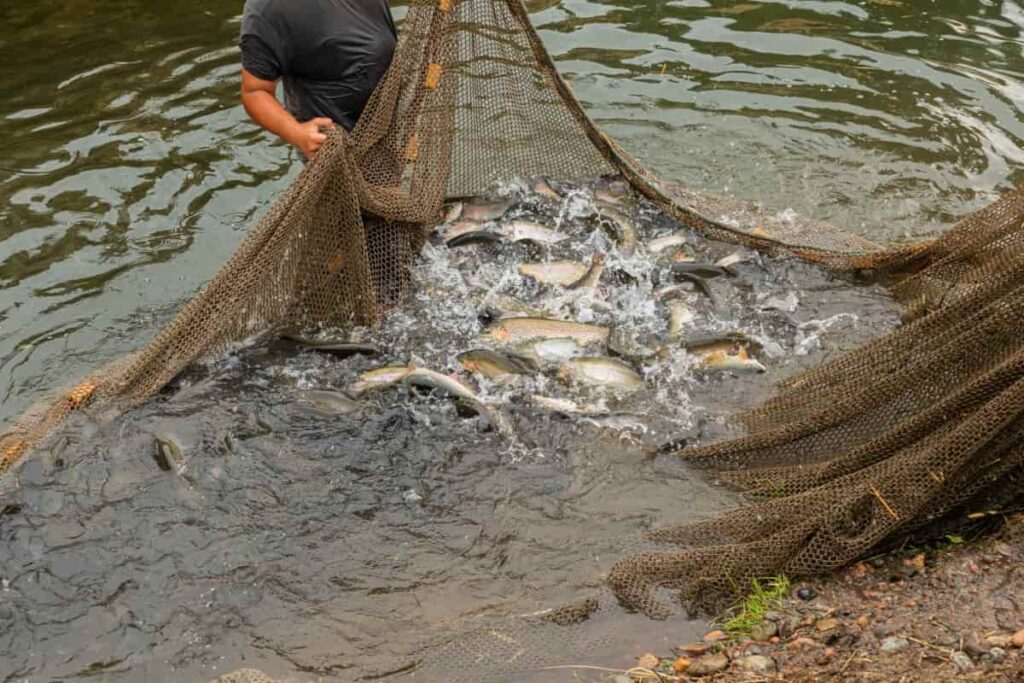These high-yield fish options can help maximize your farming efficiency and increase your output. By focusing on fast-growing fish for farming, aquaculturists can maximize production efficiency and sustainability. Selecting the right species with rapid growth potential is essential for ensuring a successful aquaculture operation.

Tilapia: Characteristics and Growth Rates
Tilapia is a popular choice in aquaculture. It boasts impressive characteristics and growth rates that make it a favorite among fish farmers. Known for their adaptability to various environments, tilapia can thrive in different water conditions, making them an ideal species for farming projects. These resilient fish are able to grow rapidly under the right conditions, reaching market size relatively quickly compared to other species. With proper feeding and management practices, tilapia can achieve substantial weight gain within a short period.
Catfish: Optimal Conditions for Rapid Development
Catfish, known for their whisker-like barbels and rapid growth potential, thrive in optimal conditions that promote quick development. These freshwater species are highly adaptable to various environments, making them ideal candidates for aquaculture enthusiasts looking for fast-growing fish.
To ensure catfish reach their full growth potential, farmers must maintain water quality and temperature within specific ranges. Catfish prefer warm waters between 75-85°F to accelerate their metabolism and growth rate. Proper aeration and filtration systems also play a crucial role in supporting their development.
Carp Species: Varieties and Growth Potential
From common carp to mirror carp and grass carp, each type brings its unique characteristics to the table. Common carp are known for their adaptability and resilience, making them a popular choice for fish farming. Mirror carp, with their distinctive scale patterns, also have excellent growth potential under proper conditions.
In case you missed it: The Rise of AI in Aquaculture: How Artificial Intelligence is Shaping Fisheries Industry

Grass carp are favored for their herbivorous nature, contributing to efficient pond management by controlling aquatic vegetation growth. Each Carp species has its specific requirements when it comes to water quality, temperature, and feeding habits.
Salmon: Farming Techniques for Speedy Growth
Salmon farming requires precise techniques to achieve rapid growth. Controlling water quality is crucial, ensuring optimal oxygen levels and suitable temperatures for salmon development. Feeding plays a vital role; providing a good diet rich in proteins accelerates their growth rate. Farmers must monitor stocking densities to prevent overcrowding, which can hinder salmon growth and lead to stress-related issues.
Implementing vaccination programs helps protect the fish from diseases that could stunt their development. Maintaining clean tanks or pens is key; a hygienic environment promotes healthy growth and prevents infections. Utilizing technology like automated feeding systems ensures consistent nourishment for the salmon throughout their growth cycle.
Barramundi: Adaptations for Aquaculture
Barramundi, also known as Asian sea bass, are renowned for their adaptability to aquaculture settings. Their ability to thrive in varying water conditions makes them a popular choice among fish farmers looking for resilient species to cultivate. These fish have a unique physiology that enables them to efficiently convert feed into muscle growth, making them highly sought after in the aquaculture industry.
Barramundi’s omnivorous diet allows farmers flexibility in feeding practices and reduces production costs. Their rapid growth rate is another key factor that contributes to their popularity in aquaculture.
Trout: Feeding Practices for Maximum Growth
Trout are voracious eaters, which makes their feeding habits crucial for achieving maximum growth in aquaculture. Providing a good diet rich in protein and essential nutrients is key to promoting rapid development. Feeding trout small, frequent meals throughout the day helps optimize their growth potential.
In case you missed it: Eel Farming in the Philippines: A Profitable Eel Fish Business for Aqua Farmers

Pelletized feed specifically formulated for trout is highly recommended to ensure they receive all the necessary vitamins and minerals. Monitoring water quality is also vital when it comes to feeding trout for maximum growth. Clean water, free of pollutants, and adequate oxygen levels contribute significantly to their overall health.
Pangasius: Low-Cost, High-Growth Aquaculture
Pangasius is a popular choice in aquaculture for its rapid growth and cost-effectiveness. These freshwater fish can reach market size in a relatively short period, making them ideal for commercial farming operations. Native to Southeast Asia, Pangasius thrive in warm water conditions and can grow quickly when provided with proper nutrition and care. Their low feed conversion ratio means they efficiently convert feed into body mass, resulting in high yields at lower costs compared to other species.
With their mild flavor and firm texture, Pangasius has gained popularity among consumers worldwide. In aquaculture settings, Pangasius farmers focus on maintaining optimal water quality and providing balanced diets to ensure steady growth rates throughout the production cycle.
Hybrid Striped Bass: Genetics and Growth Efficiency
Hybrid Striped Bass, the result of crossbreeding two bass species, offers a fascinating look into genetics and growth efficiency. Through selective breeding practices, these fish exhibit accelerated growth rates and robust health characteristics. The genetic makeup of Hybrid Striped Bass contributes to their ability to thrive in aquaculture settings by displaying high feed conversion ratios.
Their efficient metabolism allows for rapid weight gain, making them an ideal choice for farmers looking to maximize production outputs. By understanding the intricate genetic factors at play, aquaculturists can tailor management strategies to optimize the growth potential of Hybrid Striped Bass.
Arctic Char: Cold Water Growth Dynamics
Arctic Char is a resilient cold-water fish species that thrives in chilly environments where other fish struggle to survive. The dynamics of growth for Arctic Char are fascinating; they have adapted to efficiently convert their food into muscle mass even in icy waters. This ability allows them to grow steadily and reach market size relatively quickly compared to other cold-water species.
In case you missed it: Unlocking the Potential Of Sustainable Aquaculture: How to Start and What You Need to Know

Their metabolism slows down in colder temperature levels, which actually benefits their growth, as it requires less energy for maintenance and more for development. This unique trait makes Arctic Char an attractive option for aquaculture operations seeking fast-growing fish that can withstand harsh conditions.
Groupers: Techniques for Accelerating Growth
Groupers are known for their slow growth rate, but with the right techniques, farmers can accelerate their development. One key method is providing optimal water quality and temperature to make an ideal environment for growth. Consistent monitoring of feeding schedules and adjusting diets based on growth stages can also boost grouper growth rates. Implementing proper stocking densities in aquaculture systems prevents overcrowding, promoting healthier fish that grow faster.
Regular health checks and swift intervention, when issues arise are crucial in maintaining accelerated growth rates. Overall, high-yield aquaculture represents a dynamic and evolving industry with significant opportunities for sustainable food production. By understanding the optimal conditions, feeding practices, genetic traits, and farming techniques specific to each species, aquaculturists can accelerate growth rates and increase yields efficiently.
- Sheep Farming Business Plan for Beginners
- Aquaponic Farming at Home: A Step-By-Step Guide
- Profitable Village Farming Business Ideas in 2024
- High-Yield Aquaculture: Fast-Growing Fish for Farming
- Effective Fish Pond Construction Techniques for Beginners
- Irrigation and Water Management in Pineapple Farming
- Blossom to Harvest: Mastering Flowering and Pollination in Papaya Farming
- Pig Fattening Essentials: From Selection to Sale for Beginners
- Raising Wagyu Cattle: A Complete Guide for Premium Beef Production
